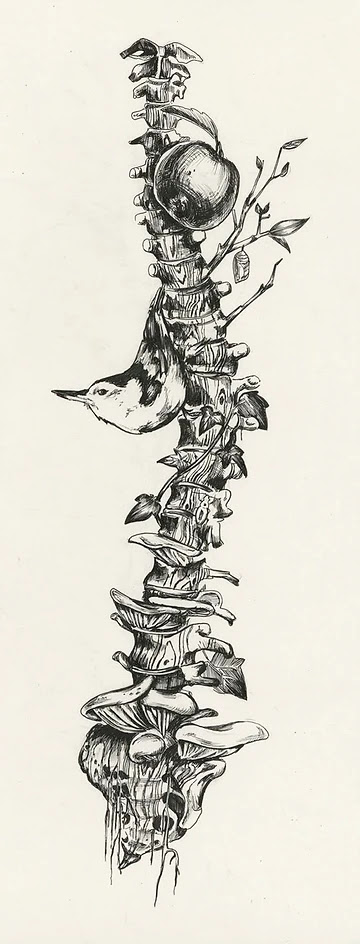By Amy Moffat
The ways in which we use (or don’t use) our bodies shapes our physique. Most of us spend a few hours a day at a desk in front of a screen, or peering down at our phones, putting our neck and upper-back muscles to work. Movement comes through the ways in which we commute to work or in short bursts of cardio or weight workouts that we cram into our week, or if we’re lucky through mindful movement systems such as Pilates, Gyrotonic or Yoga.
Commonly I see limited range of movement (ROM) through the thoracic spine, the twelve vertebrae in the mid-section of our backs, whether through limitations in extension (opening up the chest and bending backwards), lateral flexion (bending to the side), in rotation (twisting through the thoracic) and in flexion (bending forwards).

If we develop stiffness in the upper back, common sense tells us that the areas above and below—the neck and lower back—will have to compensate to achieve functional ROM. This is why pain symptoms in the neck and shoulders, as well as the lower back, benefit from being treated holistically along the spine, not simply spending time on the area of pain but examining where the pain problem initiates.
I find in my clinic that improving the ROM in the thoracic spine, through careful soft tissue manipulation —utilising combinations of myofascial release, trigger point therapy and massage— as well as mobility exercises, can really alleviate and improve pain conditions up and down the spinal column, as well as elsewhere in the body.
Although the following examples of research I am about to reference are more directed towards orthopaedic manipulation, they show the importance of focusing on releasing the thoracic spine when treating neck and shoulder pain. Based on personal experience I believe this manipulation can be as effective in the form of soft tissues release techniques as mentioned above and/or mobilisation exercises in movement programs such as Pilates. In a 2009 the study, ‘The Immediate Effects of Thoracic Spine and Rib Manipulation on Subjects with Primary Complaints of Shoulder Pain’ showed that those participating enjoyed post-treatment effects of a 51% reduction in shoulder pain and a corresponding increase in shoulder range of motion after a series of thoracic spinal manipulation techniques.
Another 2009 study, ‘Thoracic spine manipulation for the management of patients with neck pain: a randomized clinical trial’, showed that those with mechanical neck pain who were treated with thoracic spine thrust manipulation once a week for three consecutive weeks experienced greater pain improvement scores at the final treatment session, as well at the two and four week follow-up periods, than those in the comparison group who received electro-thermal therapy for five treatment sessions.
This small selection of research gives us an insight into the benefits of improving mobility at this crucial area of the spine when addressing a large group of neck and shoulder complaints.

When presented with pain patterns such as carpal tunnel syndrome, piriformis syndrome, TMJ dysfunction (jaw pain), headaches or migraines and more, I always address upper spine mobility to get a sense of how the person moves and attempt to improve any spinal dysfunctions, as well as treat the particular pain region directly.
Other important factors to consider when treating the thoracic spine are stress levels and the breath. Our rib cage, and therefore the thoracic spine, will have to work differently in stressful situations compared to non-stressful situations due to the change in breathing in fight or flight mode. Breath work can therefore be another important aspect in improving spinal mobility and therefore a network of other related pain issues as mentioned.
So, if you’ve been to see me with chronic migraines, hip pain or tightness in the jaw you now know why I spend a decent amount of time investigating your spine!
If you would like to book in for a massage with Amy please get in touch info@therefinerye9.com
Follow Amy on instagram:
@i_am_massage
View her website here:
www.iammassage.co.uk